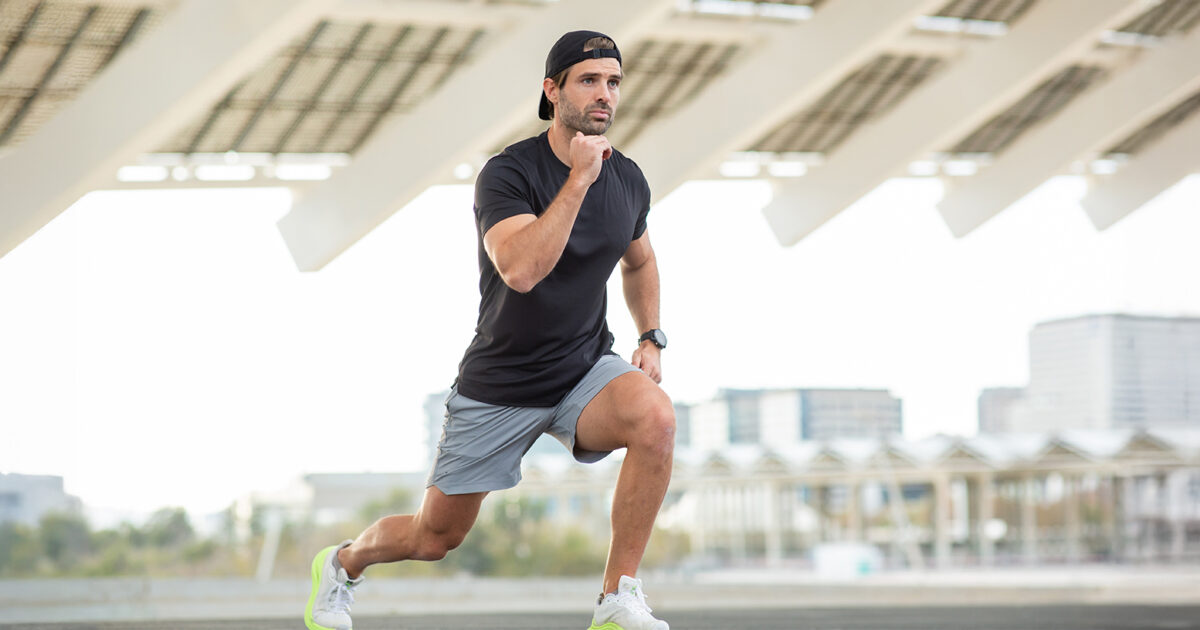I notice that today’s training is often appearance orientated. Exercises that require your brain to work don’t get featured as they should. Often, we see workouts that demand little to no coordination and that are designed merely to transform the body, making it more attractive and toned faster.
Training plays the leading role in this self-optimizing theater. One compares different workouts by the gains one has or has not achieved, and often this comparison is not about the set of skills, as it should. The questions and requests posed to me as a trainer are often around “Which exercise makes my thighs leaner?” or “This fat pad must disappear without losing my bust size”; “I want a more muscular upper body” and less like “How can I balance on a slackline?” or “How can I learn the handstand?”.
Of course, every motivation and goal is personal. However, why not having varied and adequate challenges for your body in everyday life and training? When you don’t attend the requirements of your body, you will miss out on fundamental skills like coordination and balance – and that is dangerous. Having said this let me now explain why it is smart to integrate speed ladders and hopscotch in your workout routine.
Speed ladders and hopscotch can improve the ability to decelerate explosively, change direction and accelerate again quickly while maintaining body control and minimizing loss of speed. These movements depend on factors such as speed, eccentric strength (strength that enables the athlete to decelerate movements), balance and coordination.
Learning proper mechanics to decelerate and change direction will also reduce the risk of injury because a lot of injuries occur during braking and shifting direction. Coordination is by definition the cooperation of the central nervous system (CNS, brain, spinal cord), the peripheral nerves (lines from CNS to muscle) and the muscles in a specific movement pattern. Coordination, therefore, means teamwork between brains and muscle.
Why speed ladders and hopscotch?
Speed
Jumps require a mixture of strength and speed. These dynamic exercises activate the central nervous system and enable the fast-twitch muscle fibers (which contract quickly) to work more comfortably and efficiently. So-called plyometric movements use the stretching and shortening cycle, which is a stretch reflex of rapid elongation of the muscle followed by a rapid muscle shortening.
Agility
The so-called “cutting” is a fast slow down of the body while the body’s center must equilateral to move further into another direction. Ankle mobility is required as well as hip, joints and core strength.
Coordination
Every targeted motion is a coordinated overall performance of the central nervous system under the command of the cerebrum. Coordination is responsible for the learning, controlling and adjusting of moves. The coordination’s impact leads to the effective use of strength, flexibility, endurance and speed, the other conditional essential motoric characteristics of the body.
Coordination distinguishes between “Intramuscular coordination” and “Intermuscular coordination”. Intramuscular coordination is the power development within a muscle. The muscle cell activating nerve impulses control this unfolding of power. The more well defined intramuscular coordination, the more force can be developed within a muscle. Intermuscular coordination is the interaction of several muscles within a specific sequence of movements. Good intermuscular coordination consumes less energy and increases performance.
To wrap it all up
In conclusion, no matter how much strength every single muscle has when they do not work perfectly together as a team, the whole muscle strength is ineffective. The brain is the conductor, the muscles the orchestra and the nerves the baton. Without coordination, movements are demanding because muscles are not working together but, partly, they are working against each other. Uncoordinated movements are not safe because less precise execution of this movements often leads to stressed ligaments and joints. A coordinated movement, in contrast, is a secure, efficient and simple movement. Speed ladders and hopscotch could be a great workout tool for increasing your performance due to more conservative movements.
Meaning you need less strength because you learn to use for specific movements only the required muscles in the correct sequence. The better a movement sequence is coordinated, the less exhausting it is, the less energy expenditure and oxygen consumption. And, maybe the most important fact, it can bring a lot of fun and new inspiration and stimuli for your workout at EVO fitness.
Bardo Tschapke, EVO Le Flair Düsseldorf
Instagram: healthcoachbardo
Facebook: Health Coach Bardo



